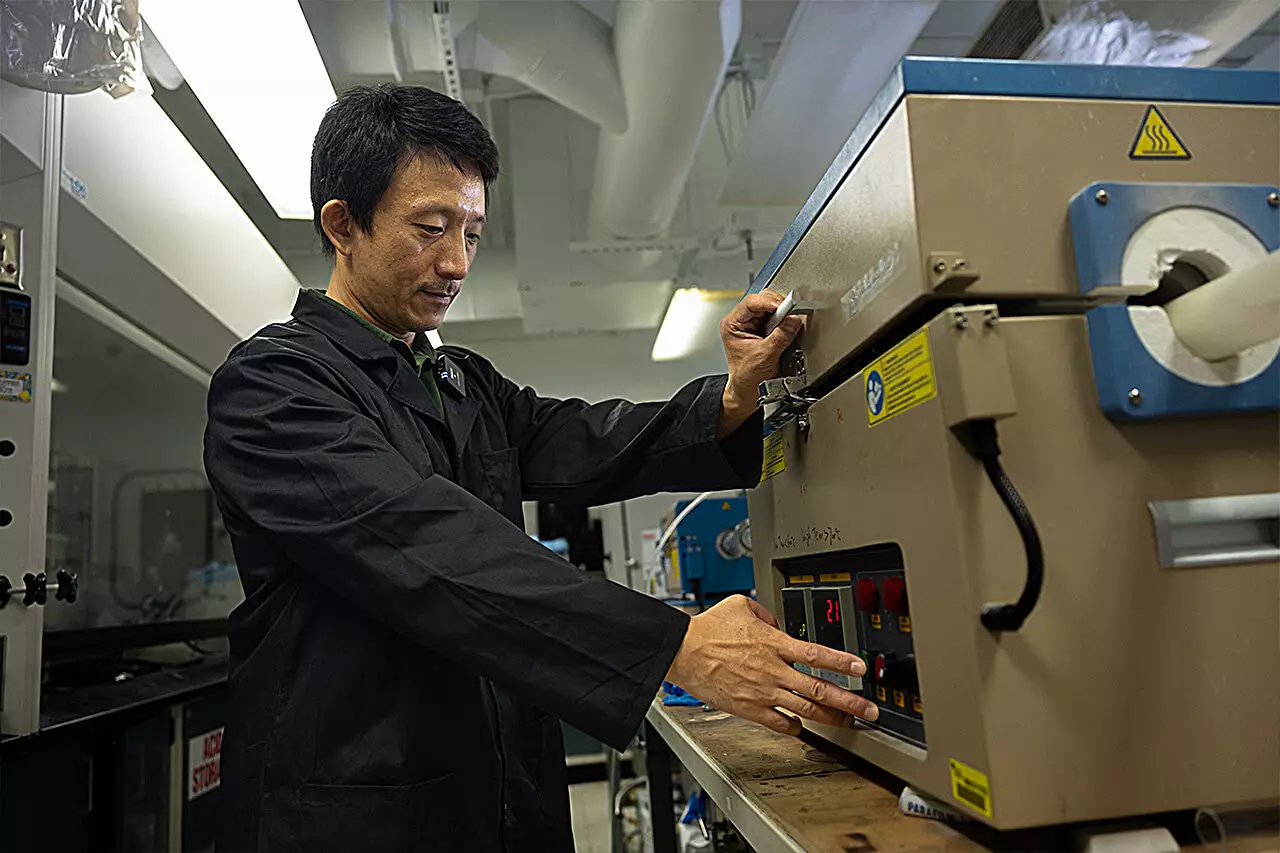The quest for sustainable energy and environmental conservation has led researchers to explore numerous innovative technologies aimed at reducing carbon dioxide emissions. Among these pioneering efforts is a groundbreaking approach developed by Yang Yang, an associate professor at the University of Central Florida (UCF). His research focuses on a novel device capable of capturing carbon dioxide and converting it into valuable fuels and chemicals, which could significantly mitigate humanity’s carbon footprint.
The fundamental principle behind this innovative technology revolves around its capability to efficiently transform gaseous carbon dioxide into carbon monoxide and formic acid—substances that are instrumental in the chemical manufacturing process. The technology, as explained in a recent study published in the *Journal of the American Chemical Society*, employs a microsurface structure composed of a tin oxide film paired with a fluorine layer. These design elements not only facilitate the capture of carbon dioxide but also enhance the overall efficiency of the conversion process.
Yang emphasizes the need for a sustainable approach to tackle the greenhouse effect caused by excess carbon dioxide in the atmosphere, stating, “We want to create a better technology to make our world better and cleaner.” This sentiment reflects a growing recognition among scientists that urgent action is necessary to combat climate change, and innovative technologies can provide practical solutions for reducing emissions from power plants, chemical production facilities, and industrial operations.
Interestingly, Yang draws inspiration from nature itself, particularly from the lotus plant. The lotus features a highly hydrophobic surface that allows water to bead up and roll off, preventing accumulation that could disrupt various functions. By mimicking this natural phenomenon, Yang has designed a device where water is efficiently managed, ensuring that the carbon dioxide conversion reaction is not hindered by excessive moisture. This reflection of nature’s design principles into technological applications represents a fascinating intersection of biology and engineering.
The captured carbon dioxide undergoes a customized conversion process that varies from the natural photosynthesis pathways used by plants, allowing for the manufacturing of numerous carbon-containing chemicals, including methanol and ethanol. “We want to create a better material which can quickly grab carbon dioxide molecules from the air and convert them into chemicals,” Yang explains, emphasizing the importance of not only capturing carbon dioxide but also utilizing it in a productive manner.
Despite the promising technology, Yang acknowledges the challenges encountered during research, particularly in managing the presence of water during the conversion process. Excess water can lead to the unintended production of hydrogen, which detracts from energy efficiency. The innovative materials used in Yang’s device repel water, allowing for a more focused conversion of carbon dioxide while minimizing undesirable by-products. This advancement is crucial, as it enhances the overall efficacy of the reaction and optimizes the use of electricity involved in the process.
The significance of Yang’s work extends beyond mere theoretical applications; it serves as a foundation for the evolution of larger-scale carbon capture technologies. Yang articulates this vision, stating that they intend to develop a prototype capable of demonstrating how quickly carbon dioxide can be transformed into usable chemicals and fuels on a larger scale.
Yang’s research represents a significant leap in the ongoing global efforts to minimize carbon emissions. While other methods, such as afforestation and traditional carbon capture, have shown promise, the versatility and efficiency of Yang’s technology could offer a more immediate and effective alternative. Moreover, the ability to harness intermittent electricity derived from renewable sources such as solar or wind power positions this technology as a feasible option in the transition towards sustainable energy.
The potential for collaboration with esteemed institutions, including Stanford University and the University of California, Berkeley, further underscores the credibility and importance of Yang’s research. It showcases a collective endeavor among scientists to forge innovative solutions that can address pressing environmental concerns.
As the world grapples with the consequences of climate change, Yang Yang’s innovative carbon dioxide capture technology offers a beacon of hope. By transforming waste into valuable resources, this technology not only aims to reduce the carbon footprint but also contributes to the development of sustainable energy solutions that can benefit future generations. As research continues to expand and evolve, the dream of a cleaner, more sustainable world becomes increasingly attainable.


Leave a Reply